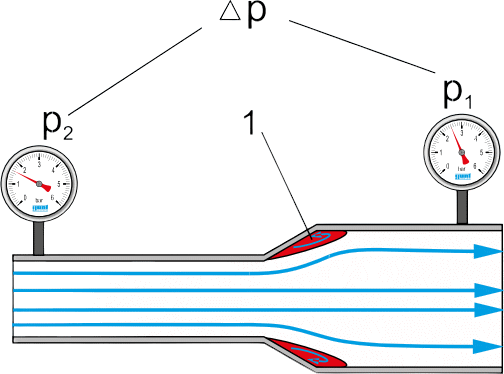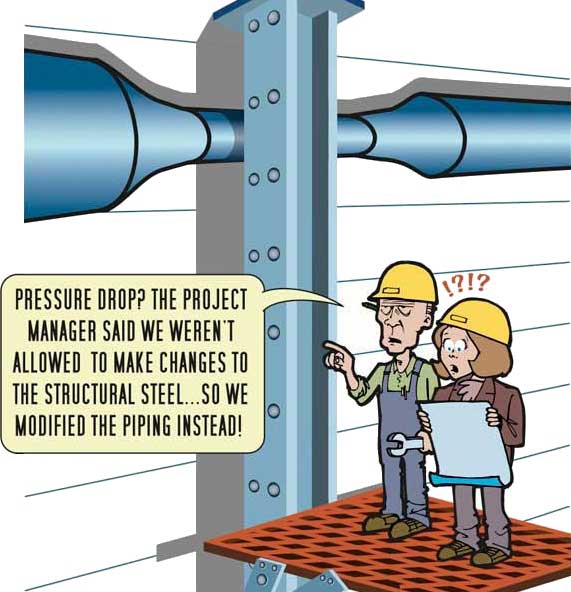What is a Pressure Drop?
Process piping systems are subject to a phenomenon known as "Pressure Drop", and it is the difference in total pressure between two points in a piping system. When a liquid material enters one end of a piping system and exits the other, pressure drop occurs.
Piping systems are generally used for the transport of fluids. As a result of friction, the pressure energy of the fluid decreases and the internal energy of the fluid increases. The decrease in internal energy is generally referred to as loss of flow, which manifests itself as a pressure drop in the fluid.
In the case of the losses that occur, a distinction is made between the internal friction in the fluid and the friction between the fluid and the wall or resistance.
In connection with the losses the following general terms of fluid mechanics are discussed..
Pipe friction due to different materials and surfaces.
Pressure drops in pipes, fittings and valves.

In practice, the surfaces of pipe walls always have a certain degree of roughness. The surface roughness arises on the one hand during the production process and process on the one hand, and on the other hand due to deposits or corrosion.
The material of the pipe also has a decisive influence on the roughness. In laminar flow, the roughness of the pipe has very little influence on the pressure drop, because the fluids in the the fluids in the area of the boundary layer have very low flow velocities or are partially not moved.
Piping systems are composed of various piping elements, each with specific properties. When determining the flow losses, a distinction is made between the pure friction losses in straight pipe elements and the additional losses in pipe fittings and other internals such as valves.
Unlike in pipe elements, the friction losses in pipe fittings are caused by friction losses due to the surface roughness, there are also further losses due to flow separation or secondary flow.
Valves are used as components for shutting off the flow in piping systems. Depending on the design of the valve closing is implemented in different ways. When the flow passes through the various valves, different pressure drops occur depending on the geometry and opening state.
In control valves, the flow rate is adjustable and is used to control the flow rate. The flow rate at the respective opening condition is characterized by the so-called valve characteristic curve.
By adding up all the pressure drops in the various piping elements, the system characteristic curve of the piping system is obtained. Via the required head of the pump as a function of the head of the pump as a function of the of the flow rate.
Pressure drop can also be significantly affected by a change in elevation in the piping system. If the initial elevation of a pipe is lower than the final elevation, there is an additional pressure drop in the system due to the increase in elevation (measured in terms of fluid height, which is equal to the increase in elevation).
Conversely, if the initial level of the pipe is higher than the final level, there is an additional pressure increase due to the drop in level (measured in terms of head, and equal to the drop in level in this case).
